Covid-19 comparison: Wales and New Zealand
- Published

New Zealand has been placed back under alert level one - the lowest of the four-tier system
With vast open countryside, a love of rugby and staggering scenery, Wales has many things in common with New Zealand.
But during the coronavirus pandemic, life has been very different for the countries 11,600 miles (18,700km) away.
While in Wales people have all stayed home for months, in New Zealand thousands packed out sports stadiums.
A Welsh couple living in Auckland told BBC Wales they were "constantly reminded" how lucky they were when they spoke to loved-ones back home.
New Zealand was widely praised for its swift response to Covid-19 - and everyday life there largely went back to normal in June - but Wales is currently seeing its highest level of lockdown.
So what happened, and why have lives been so different for the two countries' residents during the pandemic?
Let's start with the cases
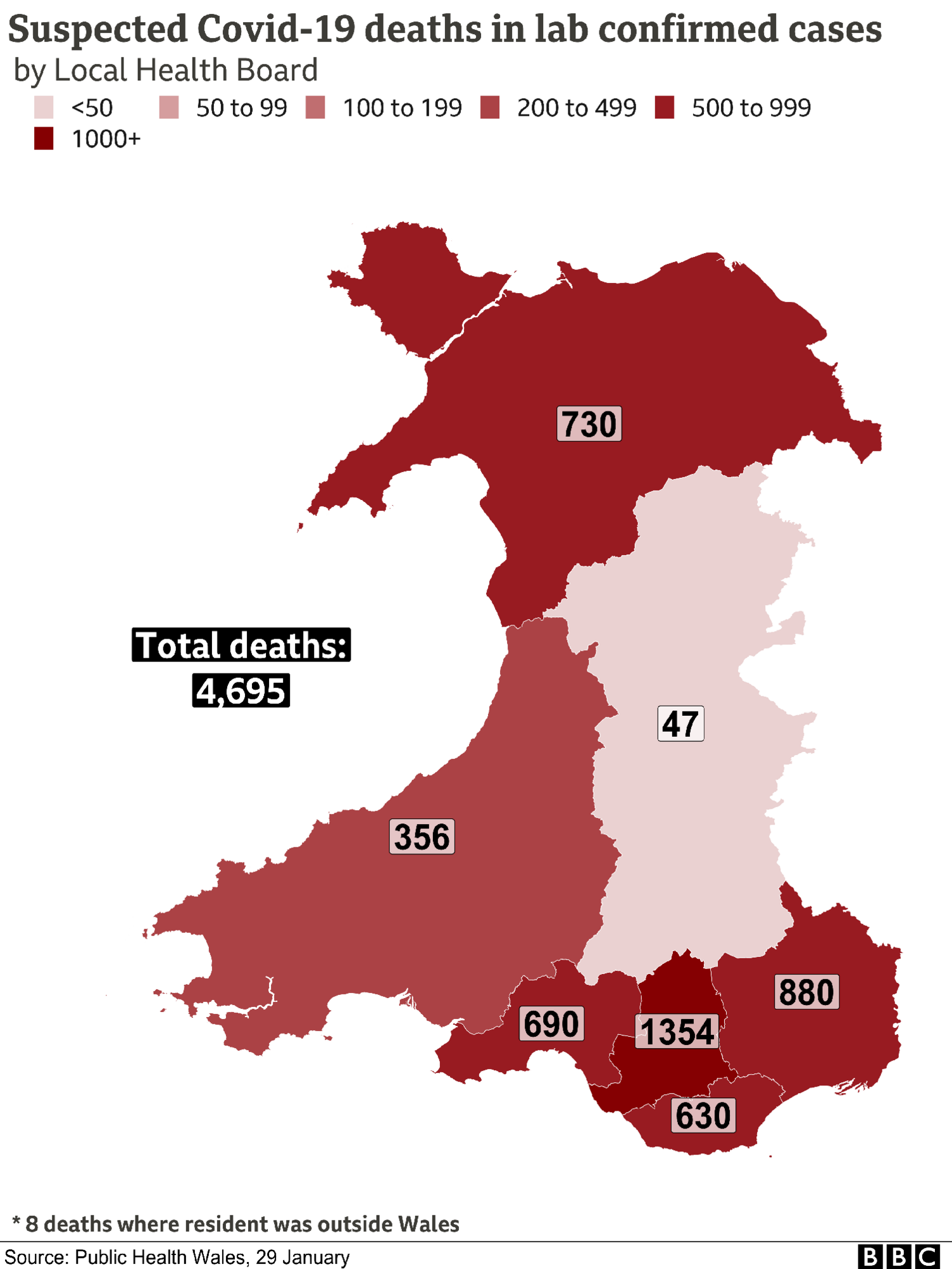
On 24 January the first new case of Covid-19 was reported in New Zealand in more than two months.
As of Friday, there had been 1,949 cases in New Zealand, while in Wales 190,940 had been confirmed.
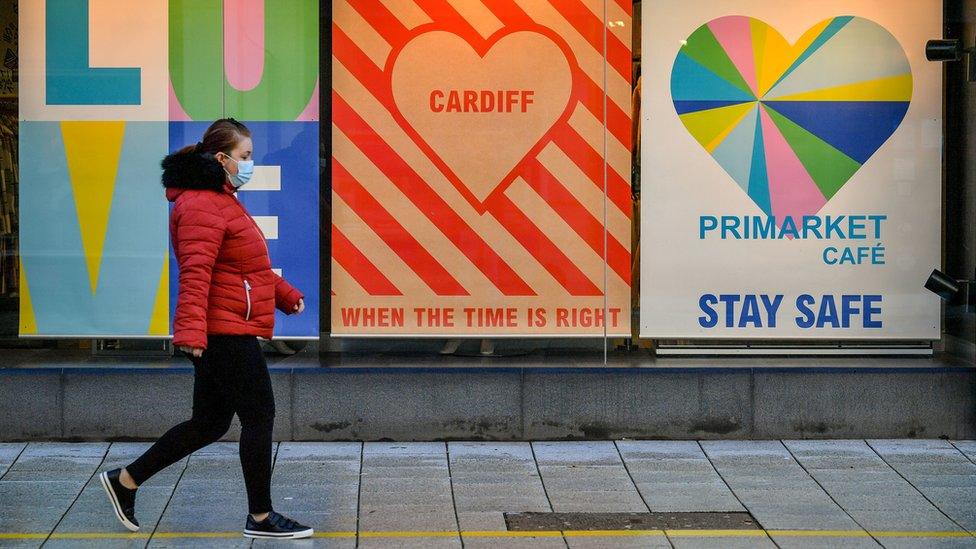
Wales' cities and towns have been hit harder than rural areas
To date, official figures show, 25 people have died with Covid-19 in New Zealand, while in Wales, the total stands at 4,695.
With a population of 4.82 million, the percentage of people who have had Covid-19 in New Zealand works out at 0.04%, compared to about 6.07% in Wales.
While the population sizes are similar, New Zealand is remote, with easily sealable borders, which is not the case in Wales, where people have been fined for travelling across the border to visit beauty spots and second homes.
New Zealand's population is also unevenly spread - with large rural areas - and in Wales, rural areas have had much lower cases rates, while denser towns, valleys communities and cities have been hit harder.
Let's go back to the start
On 16 March the first person in Wales was confirmed to have died with coronavirus, in what was called a "first tragedy" for the nation.
At that point schools remained open and people were being urged to avoid interaction with large groups of people.
As the numbers continued to rise, the Welsh Government urged people to stay at home, to work from home if they could and not to travel unless necessary.
But record numbers of people flocked to beaches and queues formed up mountains despite travel restrictions and people being urged to socially distance.
Allow X content?
This article contains content provided by X. We ask for your permission before anything is loaded, as they may be using cookies and other technologies. You may want to read X’s cookie policy, external and privacy policy, external before accepting. To view this content choose ‘accept and continue’.
The Welsh Government had already announced schools would close early ahead of the Easter break, many court cases were abandoned, events were cancelled and hospitals were already limiting visitors.
But on 23 March the first lockdown was announced across the UK, marking a major and unprecedented milestone in the pandemic.
From TV screens, mobile phones, computers and over the radio, people were instructed to "stay home to save lives", being told they would only able to leave their homes for essential reasons - to exercise once a day, and go to the shops.
By then 16 people were already known to have died in Wales, while there were 418 known cases.
Prime Minister Jacinda Ardern announcing the lockdown in March
On 2 February, a man in the Philippines became the first person outside China to die with Covid-19.
At this point, there were no reported cases in New Zealand, but the next day, the country began banning entry to any foreigner coming from or via China. Any New Zealander returning from China had to isolate for 14 days.
Then on 16 March, everybody had to go into self-isolation on arrival in the country, unless they were coming from the largely-unaffected Pacific island nations.
Then, a few days later, the borders were closed to almost all non-residents.
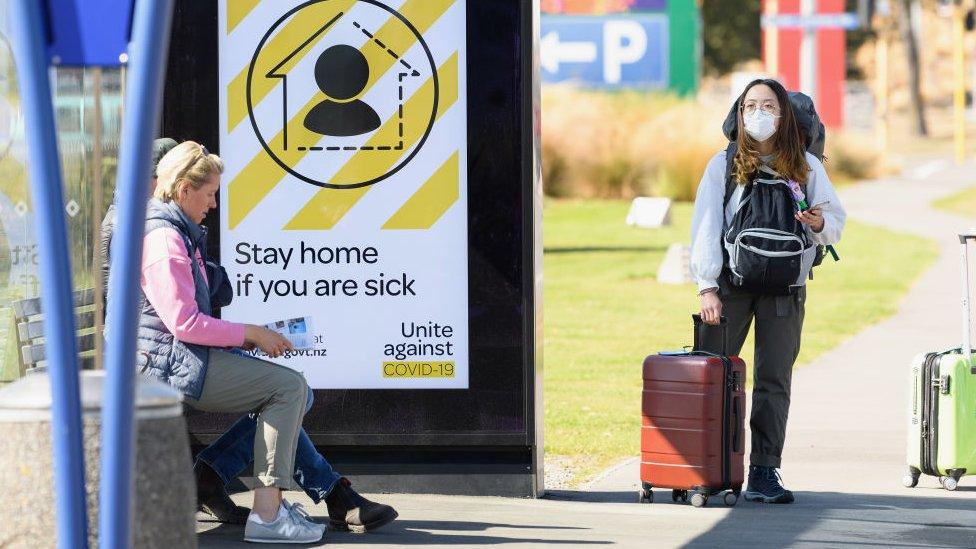
A traveller wearing a protective mask waiting for a bus near Christchurch International Airport
Wales, like the rest of the UK, has previously not closed its borders, but it brought in mandatory self-isolation for all arrivals in early-June.
Wales' one international airport - Cardiff - has remained open throughout, but during tight lockdowns travel from or into the country for holidays has been banned.
In late-March, New Zealand introduced a four-stage alert system, external, based on existing wildfire alerts. They started at level two, but on 25 March this was raised to level four, meaning a "stay home" nationwide lockdown began, which lasted for seven weeks.
Masks or no masks?
Many people in Wales - unless exempt - have not stepped into a shop or on to a train or bus without wearing a face covering in months.
But while messaging about social distancing and hand hygiene has remained clear throughout the pandemic, the rules about wearing face coverings have changed in Wales.
There, face coverings were first made mandatory on public transport, before becoming law in shops and indoor public spaces in September.

Auckland was placed back into lockdown in August after a few cases were identified
In New Zealand, where face coverings on public transport were only made mandatory for places in level two or above in August, most residents have not had to wear them for months.
It is still law to wear a mask on a domestic flight, and on all public transport to, from and through Auckland, which got placed back into lockdown in August after a few cases were identified.
Under alert level one, the New Zealand Government is advising people to keep up good habits, and urging people to use the coverings on public transport and in places like supermarkets.
Empty high streets versus crowded stadiums

On Friday fans cheered on crews at the PRADA Cup Semi Finals on Auckland Harbour
While many high streets remain deserted across Wales, the images from New Zealand could not be more different.
New Zealand has been placed back under alert level one - the lowest of the four-tier system - with life returning almost to normal after drop in cases.
Even Auckland has now returned to all-but-normal life, with people urged to wash their hands, keep track of who they have met, and to try and keep their distance from strangers.
But there are no legal requirements for social distancing or numbers to be limited for weddings and sporting events, with thousands of people packing sports stadiums, and everyone can return to work without restrictions.
In Wales, life is at the opposite end of the scale, at level four, the highest level of measures, with schools closed, travel banned and residents having to stay away from loved ones - the country is back in national lockdown after localised measures were scrapped.
Rule breakers and national unity
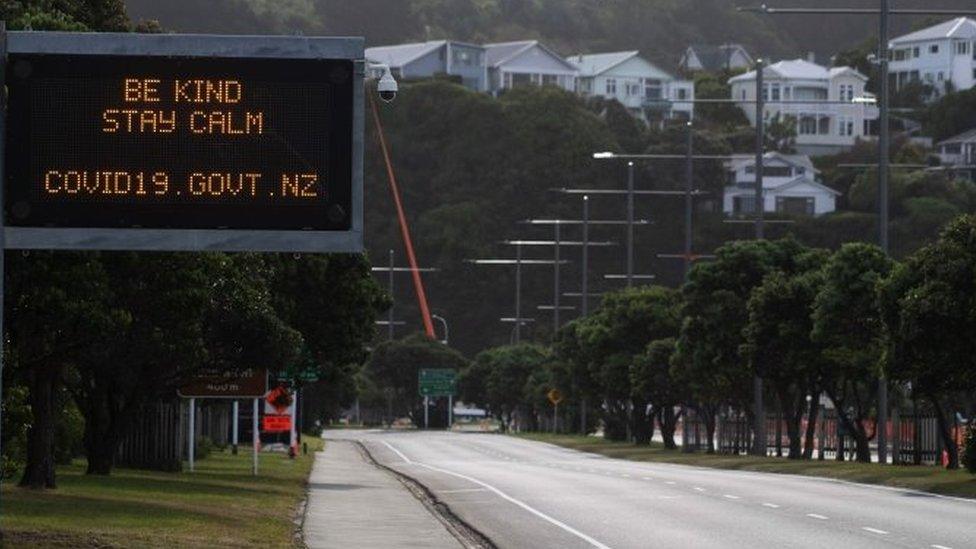
New Zealand's government displayed messages on road signs telling people to be kind
The message in New Zealand was one of the country coming together, with people being urged to "Unite Against Covid-19" and Prime Minister Jacinda Ardern repeatedly calling the country "our team of five million".
Many have put success down to a high level of compliance with rules, and clear public messaging - while in Wales there has been criticism of people being confused over differences between rules in England and Wales.
Covid lockdown rule breakers flee Cwmbran salon in police raid
While the first minister has repeatedly praised the majority of people in Wales who are making sacrifices and abiding by rules, nine months since the start of the first lockdown, some are still breaking laws.
Police have broken up house parties, stopped people driving hundreds of miles to visit beauty spots, and there are concerns over "lockdown fatigue".
'We are very lucky'

Natalie and Alex Hender moved to Auckland in 2018 from Wales and said they were "very lucky" life had returned mostly to normal
Former BBC Wales journalist Natalie Hender and her husband Alex moved to Auckland in 2018 from Cardiff for the adventure of a lifetime.
While the couple have had a few lockdown scares in recent months, after possible new cases were identified in their community, they said they felt lucky.
But Mrs Hender said it was tough to be thousands of miles away from family, and knowing they could be very difficult to get home urgently if they had to.
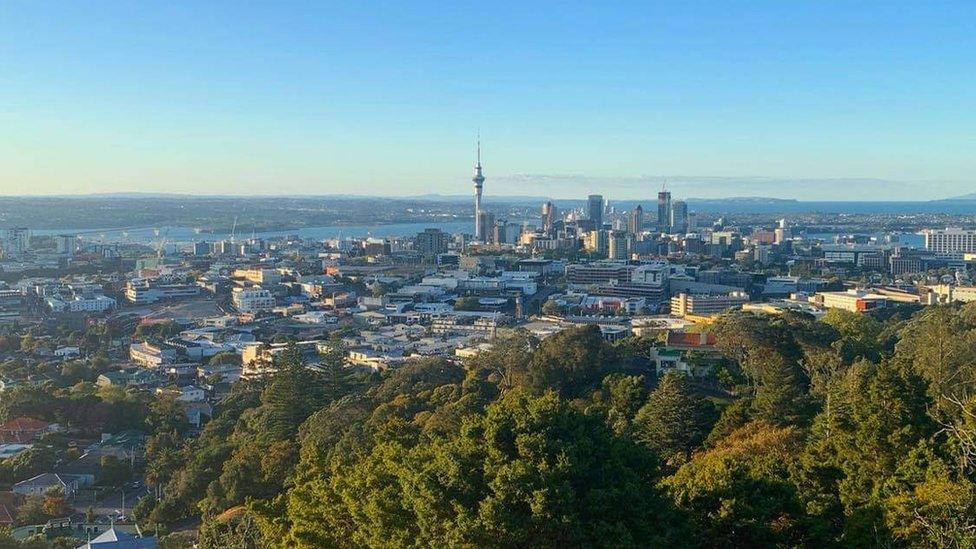
Auckland has had a few heightened periods of restriction, but Mrs Hender says testing meant many cases have been contained
"We feel guilty about being able to have a normal life here while everyone [in Wales] is in lockdown," says Mrs Hender, who said compliance with rules had been part of New Zealand's success.
"We're very fortunate to be able to enjoy things that at any other time could be taken for granted, but right now are out of the ordinary for most people, but we are aware that many others aren't so lucky and are constantly reminded of that when we speak to family and friends back home."